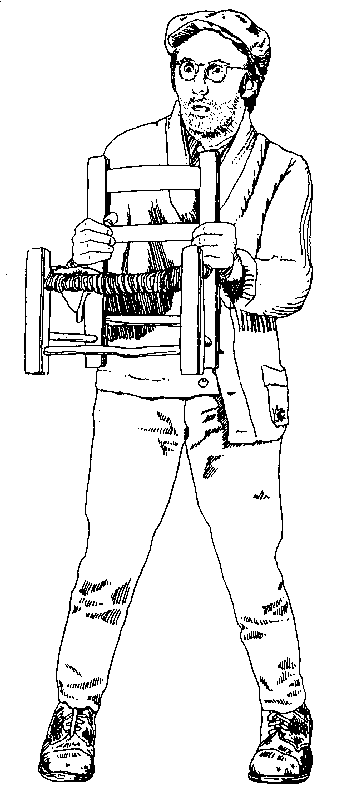
| Sun! |  |
| Ionosphere! | |
| Troposphere! | |
| Image Artifacts! | |
| Radio Interference! | |
| Unsampled u,v Regions! | |
| Confusion! | |
| Calibration! | |
| Sensitivity Limits! | |
| Time-Average Smearing! | |
| Bandwidth Smearing! | |
| Pointing Errors! | |
| Non-coplanar Baselines! |
Figure 1: ``The NRAO Welcomes Your VLA Observing Proposal''
Many of the other lectures in this course emphasize problems that corrupt the images made by synthesis radio telescopes under real conditions. By this point, you may feel that you need a mixture of good luck and magic to get useful results from such telescopes. If the images can be degraded in so many ways, how does anyone get useful science from the VLA (Figure 1)?
My goal is to explain how to avoid many of the worst imaging pathologies when planning a synthesis observation. There is at least one orderly approach to minimizing the problems you will encounter. So, in the spirit of another Hitch-Hiker's Guide (Adams 1979)--``DON'T PANIC!".
The approach described here can be used when planning observations with any synthesis radio telescope.
Resolution, Baseline Range and Observing Frequency, Field of View Restrictions and Total Integration Time work through a suggested decision tree for planning continuum observations.
Confusing Sources deals with the problem of unwanted sources in the field, and what to do about them.
The Spectroscopist's Decision Tree outlines a similar decision tree for spectral line work. The strategies disussed in these Sections should help you to meet your scientific goals by minimizing the worst image defects--those that would affect even perfectly-calibrated data.
Calibration Strategy reviews points that you should consider when planning how to calibrate your data. Stormy Weather describes what (little) can be done to modify your observing strategy once the data are actually being taken.
To separate ideas which may apply to other synthesis telescopes from details that are quirks of the VLA, I have herded the latter into an Appendix. This Appendix also describes some resources, available from the NRAO, which may help you when planning VLA observing proposals.